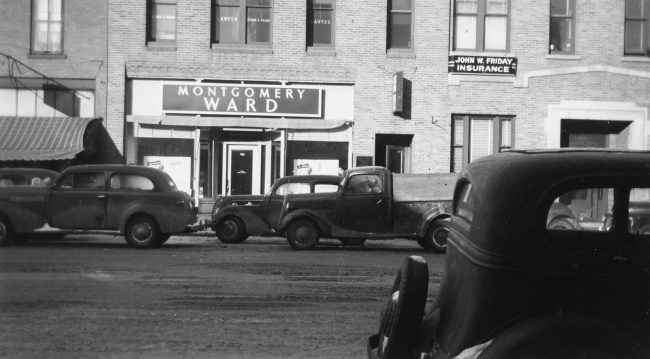
When department stores emerged in place of the typical dry goods stores back in the late 1800s, many of them targeted a specific audience – farmers. I found a couple of powerhouses and would like to share some interesting historical information about them. These first department stores should bring about some very fond memories for many of us:
-
Montgomery Ward & Company – This store had its beginnings in 1871 when Aaron Montgomery Ward of Chicago found that he could undercut rural retailers by selling directly to farmers via mail-order. He went ahead and distributed his first catalog (an 8 X 12 single sheet price list for 163 items) to rural farmers even though most of his inventory was destroyed in the great Chicago Fire. When postal rates fell, Ward increased advertising in newly popular magazines (such as the Prairie Farmer) where he told farmers to send him a penny postcard requesting a catalog. His spring 1874 edition had 32 pages, and it expanded to 100 pages that fall bringing his sales total for the year to over $100,000. Ward’s primary customer was the farmer (he thought city orders were a nuisance). His best seller was the sewing machine, and his catalog was filled with pumps, feed cutters, cane mills, corn shellers, threshers, saws, grinders, and engines. In 1875, Ward started using the slogan “Satisfaction guaranteed or your money back”, and by 1883 his catalog had become very popular and was even nicknamed “The Wish Book”. It was a Ward advertising writer who wrote the illustrated poem “Rudolph the Red-Nosed Reindeer” in 1939 to hand out to children who visited the Ward’s Santa for Christmas.
-
Sears, Roebuck and Co. – Richard Sears was an agent of the Minneapolis and St. Louis railway station in North Redwood, Minnesota (today a populated place located within the city of Redwood Falls, MN). One day in 1886, he bought a shipment of watches that were accidentally sent to a jeweler in Redwood Falls and sold them for a profit. Thus began the R. W. Sears Watch Company in Minneapolis. In 1887 he posted a help wanted ad, looking for a watchmaker who could furnish tools. Alvah C. Roebuck answered the call and in 1893 the association of these two men in their twenties, named their corporation Sears, Roebuck and Co.. Their mail order company among others, was the answer to farmers’ prayers because at the time rural general stores were charging excessive prices for their merchandise. Years later the company adopted the motto “Shop Sears and Save”. Richard Sears knew farmers and understood their wants and needs. He could write advertising copy that made farmers send in their orders and money. While his first catalog featured only watches and jewelry, the 532-page 1895 publication also offered shoes, women’s clothing and hats, wagons, fishing tackle, stoves, furniture, china, musical instruments, saddles, firearms, buggies, bicycles, baby carriages and glassware. Famous in catalog history is the strategy Sears used to put his catalogs into the hands of thousands of potential new customers. He wrote to the company’s best Iowa patrons and asked each of them to distribute two dozen catalogs among friends and neighbors. They then sent the names of these people to Sears, and when orders were received from these new shoppers, the original customers received premiums for their work: a stove, a bicycle or a sewing machine. This system was applied in other states after its success in Iowa.
These are just two examples of department store beginnings and their close relationship to agriculture. I remember fondly the term “wish book” and looked forward to the Montgomery Ward catalog every year! Share your department store experiences in the comments below.
-Terry Olson, Titan Machinery
References:
https://bizfluent.com/about-5046229-montgomery-wards-history.html
http://www.nytimes.com/2000/12/29/business/montgomery-ward-to-close-its-door.html
http://www.fundinguniverse.com/company-histories/montgomery-ward-co-incorporated-history/
http://searsarchives.com/history/index.htm